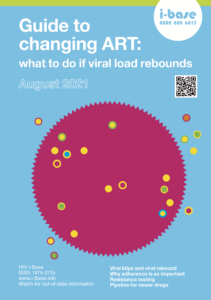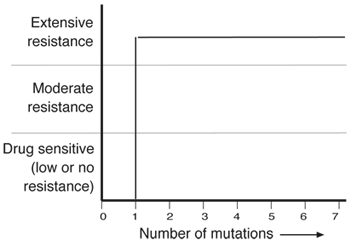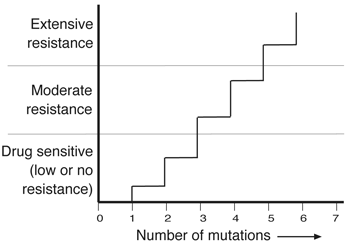Do some drugs develop resistance more easily than others?
 Some drugs will stop working after only one mutation. This is the case with NNRTIs and some nukes (3TC and FTC). See Figure 4.
Some drugs will stop working after only one mutation. This is the case with NNRTIs and some nukes (3TC and FTC). See Figure 4.
These drugs are more vulnerable when viral load is above 50 c/mL.
These mutation can stop similar drugs in the same class from working. This is called cross-resistance.
Protease inhibitors and some other nukes develop resistance more slowly.
The first mutations do not make much difference. But as resistance develops these drugs also stop working. See Figure 5. These drugs take longer to develop cross-resistance.
Integrase inhibitors are perhaps more similar to NNRTIs. If resistance mutations develop, cross resistance can also develop quite quickly.
Figure 4: How one mutation can stop some drugs working

Some drugs stop working after only one mutation.
These include NNRTIs (nevirapine, efavirenz, rilpivirine and etravirine), integrase inhibitors (raltegravir) and some nukes (3TC and FTC).
Figure 5: Resistance increases slowly with some drugs

With other drugs, the first one or two mutations make little difference.
If you continue taking the same drug, more mutations develop. The drugs work less well with every step. PIs and some nukes work this way.
- There is more info on drug resistance and adherence in this Introduction to ART.
- This Guide to HIV drug resistance is a more details resource. It explains drug resistance and understanding resistance tests results in more detail.
Last updated: 1 August 2021.
